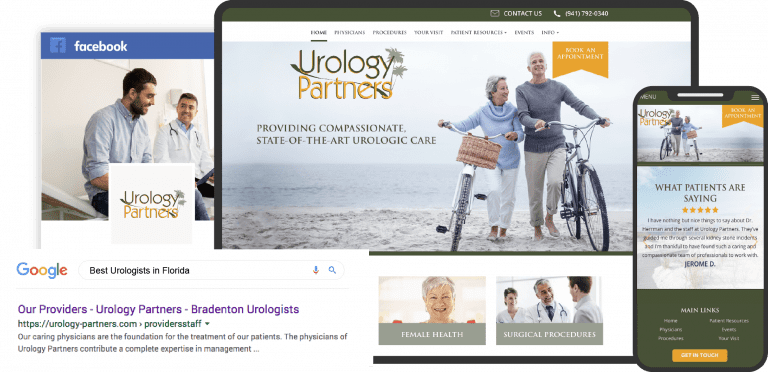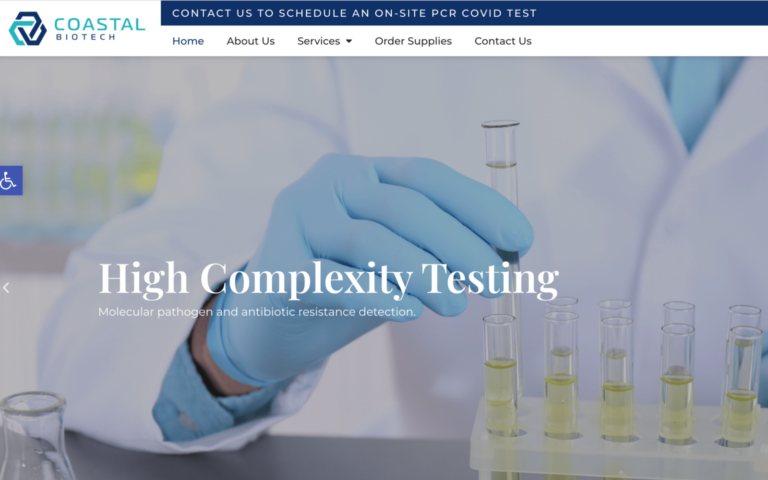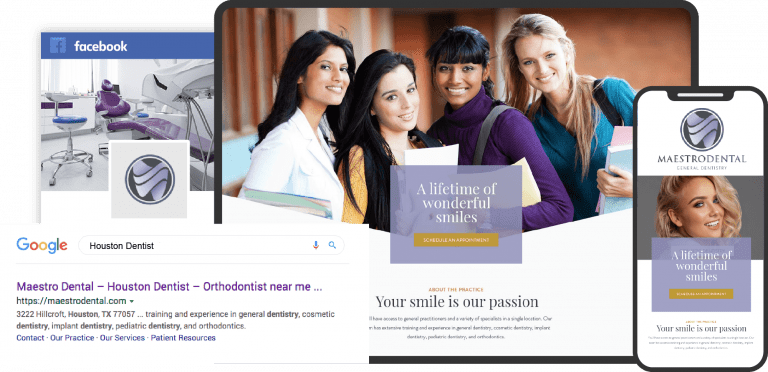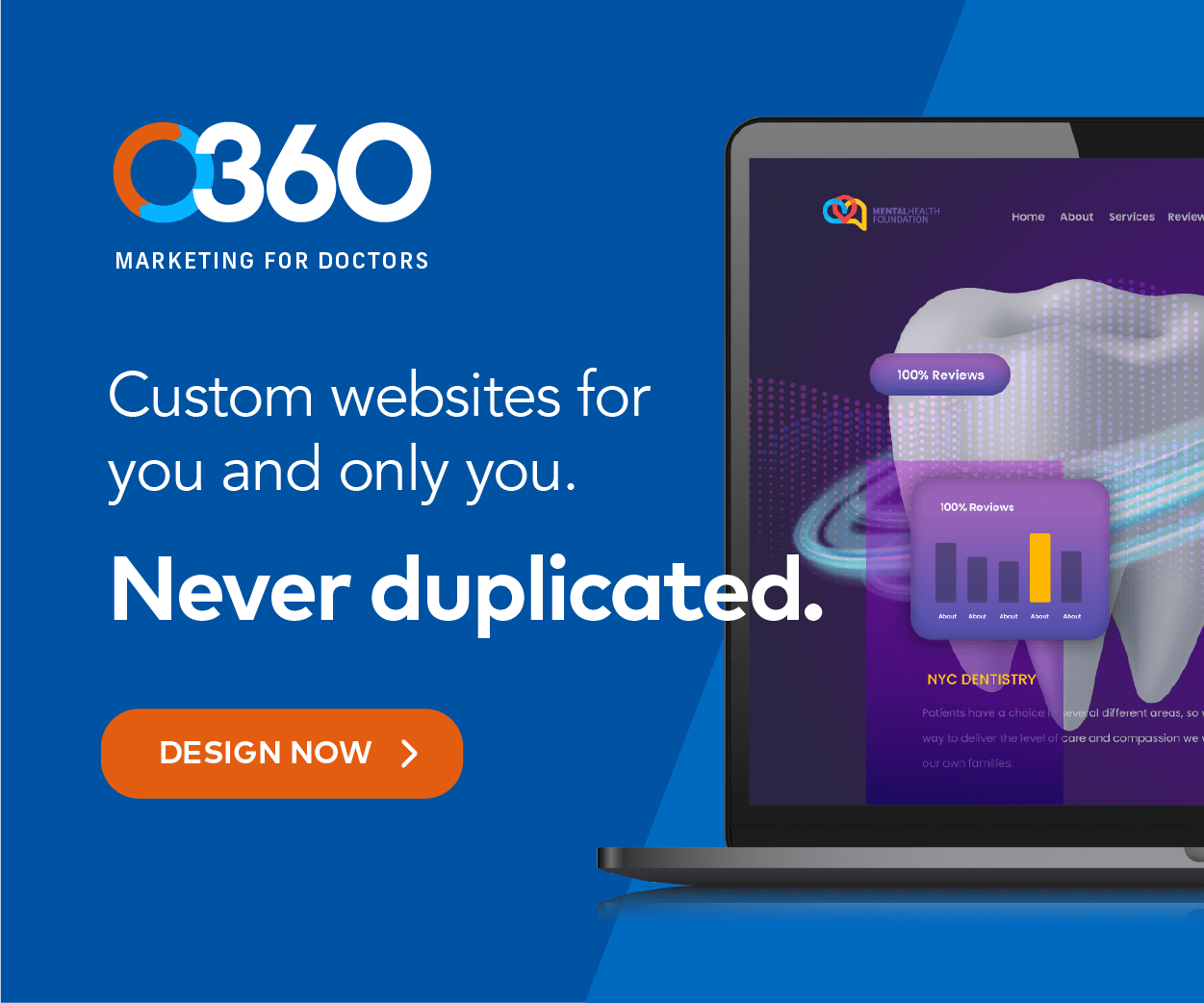Visual marketing on your website makes catching the attention of your patients faster than text alone, especially within the healthcare industry. Visuals can make complex health topics easier to understand and remember, which holds in every area of expertise. Visuals throughout your website, your social media posts, and even newsletters can make explaining important healthcare facts accessible for everyone and help further your audience’s understanding and engagement with their own healthcare needs. There’s a power with visual marketing that helps create a stronger bond with your patients.
How Does Visual Marketing Work?
Visual content, such as images and infographics, focuses on creating an emotional grappling point with your intended audience. As visual content can capture people’s attention more quickly, it can provide information in a greater capacity than plain text alone. Despite being the most under-utilized aspect of medical care, visual marketing is more crucial now than ever, even if both concepts appear incompatible.
In the healthcare industry, these visuals help provide understanding and reassurance about their health concerns and help foster a stronger sense of trust and belonging in their medical practice. Healthcare is subject to complex scientific and government-related policies and information, which can take time to interpret and provide to a general audience. It’s about utilizing the power of pictures and images with a purpose – to educate and inform your audience.
Today’s internet users consume online content at a rapidly changing rate. In healthcare practices, it is critical to adapt your marketing plan to compete and measure up to the competitive edge that the internet provides. Visual marketing increases brand recognition, medical awareness, and patient engagement. It can enhance your healthcare marketing plan by communicating messages quickly and reliably.
The Types of Effective Visual Content
When considering your visual marketing, visual content such as pictures, infographics, and videos provide some of the most effective forms of content that greatly impact how your patients will consume your healthcare information. Visual marketing makes your practice more appealing and can resonate with your target audience in various ways:
- Images and Photos: The right image instantly grabs attention and conveys a message before a single word is read. In healthcare, images can be used across websites and social media to highlight important healthcare information and humanize your practice, making you feel more approachable to the average user.
- Videos: Videos have become one of the most effective visual marketing tools, as they can demonstrate any information in a digestible format. Videos can showcase your practice and staff, help share patient testimonials, provide information about your treatments and services, and market your practice visually engagingly. These videos are a prime example of humanizing your practice and are particularly impactful on landing pages to boost conversion rates.
- Infographics and Data Visualizations: Complex healthcare data and statistics are some of the most misunderstood facets of healthcare, as these statistics tend to go unnoticed by common users and can be overwhelming to comprehend. Infographics, especially when designed correctly, can distill and make this information engaging and easy to understand. These infographics are also easily shareable on social media and can be used as a visual marketing engagement point for those with healthcare needs.
- Presentations: While not as commonly used, presentations shared on platforms such as SlideShare can help extend the reach of your information and services and make your practice more accessible beyond traditional patient-doctor interactions. These presentations can also be a nontraditional way to engage with your business partners, especially if you’re a wholesale business.

How To Combine Medicine with Visuals Through Strategy
Creating effective visual content requires your visuals to be simple, relevant, and high-quality, as these visuals reflect your brand’s personality and core message. To better utilize them, here are some key pointers to keep in mind when developing your visual marketing strategy:
Identify Your Target Audience
First things first, know who you’re talking to. The healthcare needs and interests of teenagers vastly differ from those of seniors. Understanding your audience is crucial. It helps tailor your visual marketing to your audience’s interests, needs, and challenges. For example, vibrant, energetic images appeal to a younger demographic, while a more subdued, straightforward approach resonates more with older viewers.
Staying On-Brand
Consistency is key. Your visual content should naturally extend your brand’s overall personality and values. Everything should feel cohesive, whether it’s the color scheme, the tone of the visuals, or the type of content you produce. This consistency helps build recognition and trust with your audience. When people see your visual content, they should immediately associate it with your brand, knowing exactly what you stand for.
Knowing Your Message
Every piece of visual content should serve a purpose. Are you aiming to educate, to reassure, or to inspire? Your goal might be to build trust, showing your audience that you understand their concerns and have the expertise to help. Alternatively, you could be highlighting the benefits of a new service or product. Regardless, your message should be clear and align with your overall branding strategy. Consistent branding across all visuals reinforces your message and helps it stick with your audience.
User-Generated Content
Incorporating content created by your patients or clients can be incredibly powerful. User-generated content (UGC) lends authenticity to your brand. It’s one thing for a company to tout its merits, but it’s far more convincing when real users share their positive experiences. This can be especially effective in healthcare, where personal testimonials about the impact of a treatment or service can reassure and motivate others to take action.
Repurposing Existing Content
You likely already have a wealth of resources that can be transformed into engaging visual content. This can be anything from blog posts and research studies to customer testimonials. By repurposing existing content, you can extend its lifespan and reach. For example, turning a detailed research paper into an infographic makes it more digestible and shareable. Similarly, customer reviews can be highlighted in social media posts or videos, giving them new life.
Picking Colors: How Color Affects Visual Design and Message
Visual content and web design go hand-in-hand, as the color schemes associated with your content carry the feelings, emotions, and messages you wish to convey. Colors can influence how people think and feel about a brand or message and are a powerful tool to consider when incorporating visual content into your strategy. If you already have a brand image in mind, use the colors you’ve selected in effect when selecting the visuals you want to use with your content.
- Red: Red is a powerful passion, energy, and urgency color. It can be a double-edged sword in healthcare marketing. Red can grab attention quickly, making it great for alerts or calls to action. However, it’s also the color of danger, so it should be used sparingly and thoughtfully.
- Orange: Orange provides energy and warmth. It’s also friendly and inviting and can grab attention without being too overwhelming. In healthcare marketing, the color orange can promote feelings of comfort and optimism.
- Yellow: Yellow shines with optimism, clarity, and warmth. It’s the color of sunshine, after all. Yellow can energize your audience and make them feel happy and confident.
- Green: Green represents nature, growth, and renewal. Using green in your visuals can create a peaceful and healing atmosphere. It’s great for brands focusing on natural health products and sustainability or emphasizing growth and recovery.
- Blue: Blue is the most often used color in healthcare marketing. It is often associated with trust, security, and professionalism. Blue is also a go-to color because it represents cleanliness and health.
How To Make The Most Out of Your Visuals
If you’re planning and considering the visuals to use for your website redesign, social media campaign, or other content, it can be overwhelming to choose among the thousands of images that flood people’s screens daily. Ensuring that your visuals stand out and connect with your audience can be challenging for those working to revamp their healthcare marketing campaign. If you’re at this stage of your campaign design, it all comes down to basics: keeping your visual content clean, simple, and compelling enough to help them understand and engage with your services with more impact and

Contact Optimized360 Today For a Visual Upgrade To Your Brand
Navigating the intricate landscape of visual content creation and optimization can be daunting. That’s where a specialized partner like Optimized360 steps in. With years of expertise in medical marketing, Optimized360 is equipped to transform your visual marketing strategies into compelling narratives that engage and convert. In a realm where every color, image, and video frame can influence perceptions and decisions, having a dedicated team to guide your visual content strategy is invaluable.
Optimized360 can help ensure your visual content is seen, remembered, and acted upon. So, whether you’re looking to revamp your social media presence, refine your website’s visual appeal, or create impactful marketing campaigns, Optimized360 has the expertise and creativity to make it happen. Connect with Optimized360 today and start making the most out of your visuals.














